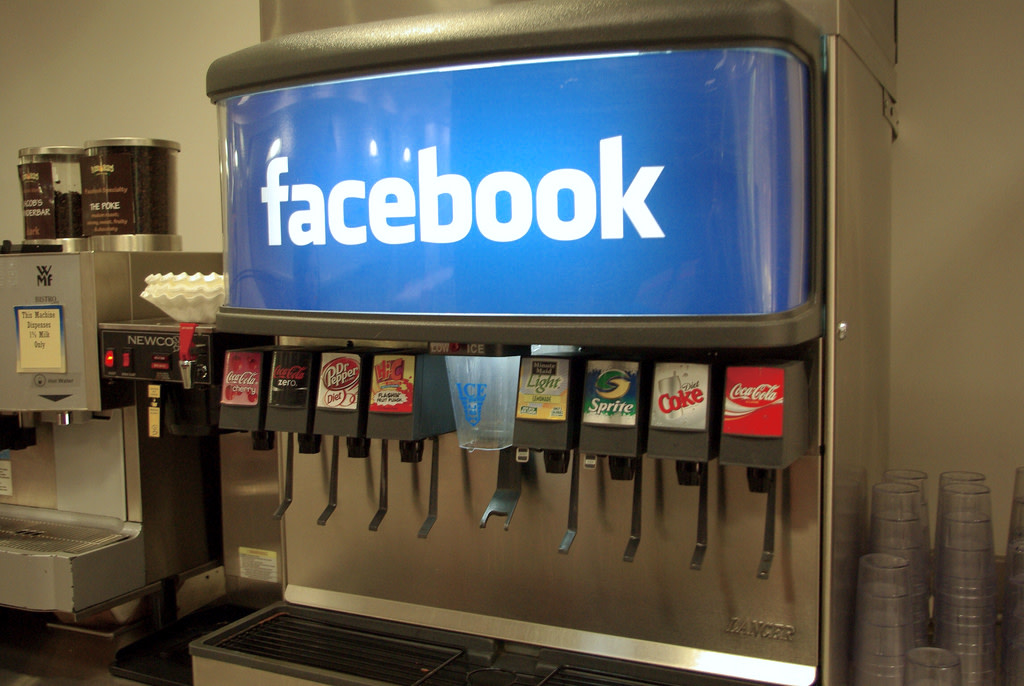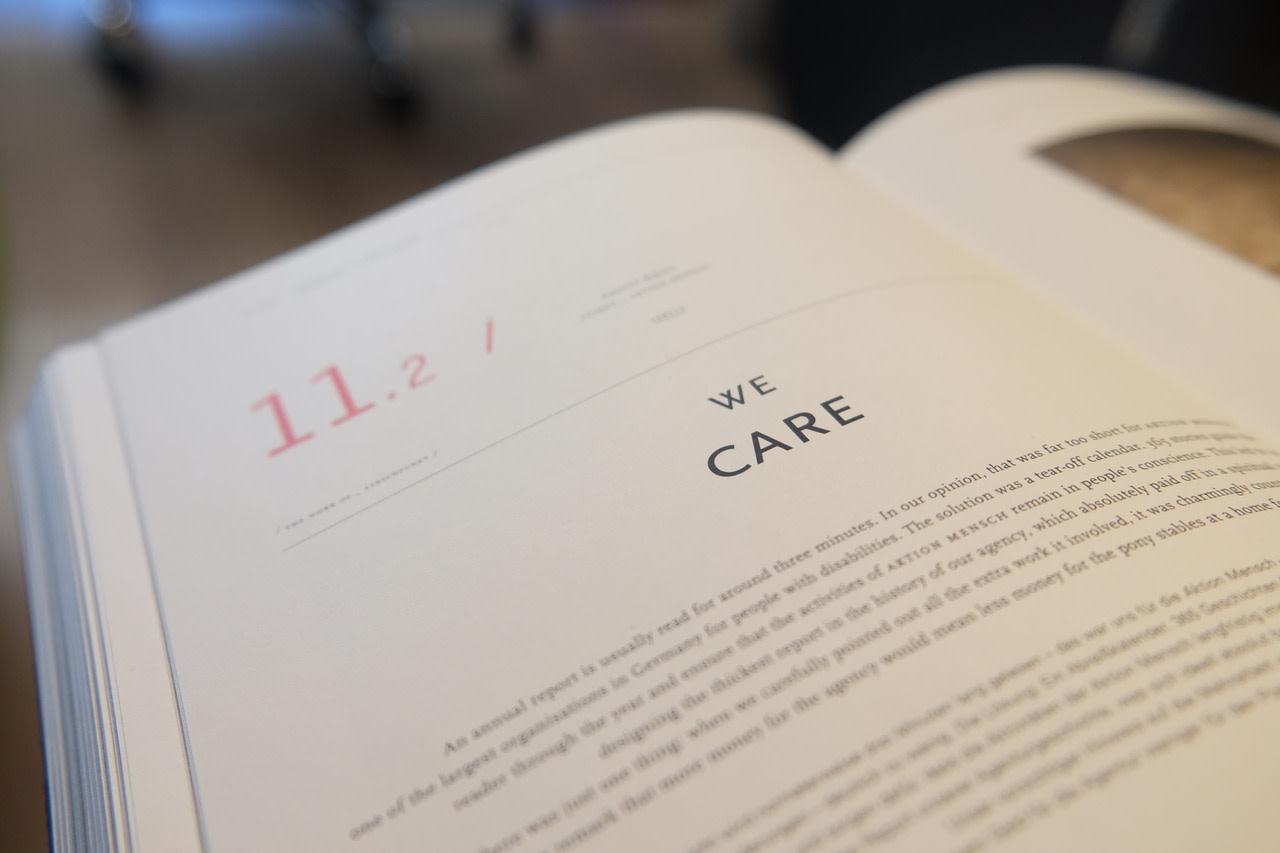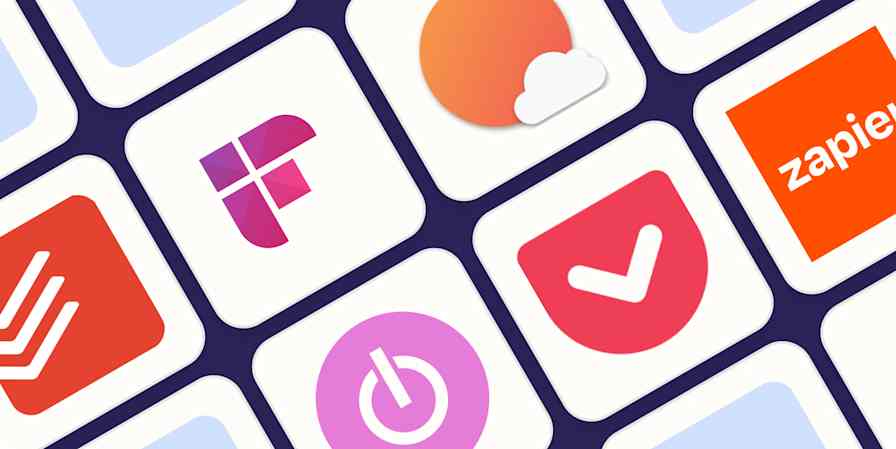Imagine how much you’d accomplish in one day if not for annoying tasks like buying food. What if you could invest in a software class instead of paying for daycare or your student loans, or if you had more than 3 paid holidays a year?
From ping pong to paid parental leave, companies try to pamper their employees and make them enjoy being at work. Since happier, less stressed employees make more effective employees, these extra benefits seem great for productivity.
But are these perks really as beneficial as we think? This partly depends on the person: One person’s fun perk is another's distraction. The effectiveness of any perk also comes down to execution. If companies don’t back up their benefits with clear communication lines, a supportive culture, or responsive management, their perks are little more than recruiting tactics.
So which perks are worth the hype—and how can your team avoid their potential downsides??
1. Paid Parental Leave

In 2016, more than 20 of America's most best-known companies, including Bank of America, Coca-Cola, and Nike, announced paid maternity leave plans ranging from six weeks to four months or more, following a trend that has been standard in Europe for years. As cities like San Francisco (and companies like Zapier) introduce and lengthen their paid parental leave policies—or extend their benefits to fathers and adoptive parents—more research has emerged to suggest that parental leave is well worth the investment.
The "right" amount of time after giving birth off varies widely between women—Marissa Mayer took only two weeks off after having her first child—but in terms of mental and physical health, 12 weeks seems to be the bare minimum. Women who receive more than 12 weeks of maternity leave are less likely to experience postpartum depression, according to a study published in the Journal of Mental Health Policy and Economics. Better yet, women who use generous paid leave policies experience those mental health benefits up to 30 years after giving birth, says another study of working mothers in several European countries.
Physical recovery from childbirth takes even longer, says Dr. Julie Wray of Salford University. After interviewing new mothers three times in the seven months after their deliveries, she concluded that most women need about a year to fully recover from childbirth. While fathers obviously don’t need that physical recovery time, they do become more active and engaged fathers when they take two weeks or more off work after birth. This helps both parents in a partnership pursue a healthier work-life balance that boosts their productivity in the long run.
Sure, paid leave imposes some unavoidable costs on companies: Retaining the new parent’s full salary and benefits, the expense and time cost of hiring a temp to cover them, and the loss of productivity resulting from other team members taking on additional responsibilities. But paid leave also increases the likelihood that new mothers remain at their companies after giving birth, with a study from the Center for Women and Work at Rutgers University finding that women who had taken advantage of New Jersey's paid-family-leave policy were far more likely to be working nine to 12 months after the birth of their child. And since companies require 26.5 days to fill a vacancy—that’s nearly three weeks of unanswered emails—temporarily covering an employee could be cheaper than replacing them permanently, both from a financial and productivity standpoint.
Preliminary findings from pilot paid leave programs in several states support this. According to a report by the US Department of Labor, more than 90 percent of employers who used California's paid family-leave initiative reported either positive or no noticeable effect on profitability, turnover, or morale.
Potential Downsides:
But if you’ve ever spent your vacation on a surprise conference call, returned to a mountain of missed work, or been blindsided by an absent coworker’s unexpectedly large workload, you know that a poorly planned paid leave can create problems for an entire department.
After taking a 14-week paid leave, Zapier’s Brian Cooksey recommends some parental leave best practices for companies and new parents to make the transition as seamless as possible.
First, new parents should clearly communicate their boundaries—when (or if) they’ll answer emails, what responsibilities they’ll retain, etc.—to their colleagues before leaving. In turn, coworkers need to respect those limits.
"My team respected that boundary, and it was a big relief," Cooksey says. "They would occasionally CC me on emails or mention me in threads that I might want to know about when I got back, but the intention was to keep me informed, not require input."
Once they return to work, new parents shouldn’t try to "make up" for everything they’ve missed the way they might have completed all their assignments after a few days off school. Why waste energy worrying about the meetings from last month? Instead, they should just ask a colleague to brief them on anything critical to their work coming up.
Most satisfying of all, I declared bankruptcy on any transient conversations that occurred while I was gone," Cooksey says. "I did not go back and read all the previously skipped entries on the internal blog, and clicked Mark as Read on all the Slack channels. Whatever major changes happened I figured I would learn as needed.
Finally, in their rush to return to full productivity, new parents shouldn’t ramp up too quickly.
A week of small, focused tasks (fixing bugs in my case) was a great way to get back in the groove and feel like I accomplished something each day. Judging by how many I fixed and how fresh I felt, I think it's fair to say that the extended leave benefited me.
2. Onsite Daycare
Of course, the time demands of parenting don’t end after a 12 or 16 week absence from work. And since the rapidly rising costs of child care mean some parents lose money by going back to work, companies risk losing their working parents if they don’t continue to support them throughout the child’s life.
Research has shown that employer-sponsored child care keeps parents in the workforce. Since implementing its onsite daycare, Patagonia has seen employee retention increase by 33%, with higher loyalty among their parent employees.
Even if parents don’t use the company childcare every day, it's a perfect backup when schools are out of session or their children are sick, which saves them from taking an absence or leaving early every time their child needs a checkup. In a survey by Horizons Workforce Consulting of over 5,100 employees at 400 organizations that used a backup care program, 99 percent of participants said back-up care helped them complete their work responsibilities. 90 percent said that back-up care enhanced their productivity and 87 percent said it allowed them to work days that they otherwise would have missed.
On average, back-up care kept each employee on the job ten work days per year. That means on-site care streamlines operations and keeps teams working, all of which reduces stress and increases morale for everyone—especially the parents.
Potential Downsides:
Traditionally, it’s the mother who scales back her work schedule to care for children. So by helping women accommodate a full-time job and a family, on-site child care seems to combat the "motherhood penalty" that has historically harmed the earning potential of working moms. Women’s earnings drop by 4 percent per child, whereas men’s incomes actually increased by 6% per kid, according to a 26-year longitudinal study by University of Massachusetts sociology professor Michelle Budig.
Although on-site care allows some mothers to work more hours, a difference in work hours only explained a quarter to one-third of the earnings gap between parents. Most of the discrepancy came down to discrimination against working mothers, says Budig.
"Employers read fathers as more stable and committed to their work; they have a family to provide for, so they’re less likely to be flaky. That is the opposite of how parenthood by women is interpreted by employers. The conventional story is they work less and they’re more distractible when on the job."
Unless managers back up their on-site care with a genuine belief that their working moms will continue to perform as well as men, the service won’t assist working moms as much as we think. Company sponsored day care also inhibits productivity when it prevents workers from setting flexible schedules. Particularly for fathers, who receive worse performance evaluations and lower wages when they modify their schedules for family reasons, the availability of back-up care can incentivize them to work an unhealthy amount of hours.
3. Unlimited Paid Time Off

What’s the easiest way to land a promotion? Booking a few beach vacations. People who take their full vacation time are 6.5 percent more likely to receive a promotion than those who forgo more than 11 days per year according to a survey by Project: Time Off.
Unlimited paid time off (or PTO) should be even better. Employees can maximize the reinvigorating and intellectually stimulating effects of extended breaks without trying to fit it into just two weeks or less. You'll worry less about taking a random day off when you need, since you'll still get your full vacation.
By allowing employees to decide the amount of vacation time that is appropriate for them, companies also signal to their workers that they trust their judgment. This fosters a happier, more loyal, and more productive workforce, as The Energy Project CEO Tony Schwartz writes in Harvard Business Review:
"Here’s the problem: Employees who want to game the system are going to do so inside or outside the office. Supervising them more closely is costly, enervating, and it’s ultimately a losing game. As for highly motivated employees who’ve been working from home, all they’re likely to feel about being called back to the office is resentful—and more inclined to look for new jobs."
Potential Downsides:
Unlimited PTO only increases productivity when employees feel they can actually take the time off, though. At many companies, unlimited PTO can make employees feel as if they can’t ask for any time off. For example, Tribune Publishing rescinded its program in 2014 after employees felt their vacations days were being taken away, with some even threatening to sue over the lost monetary value of years of accumulated PTO.
Why? Just as unlimited PTO remove the ceiling from an employee’s allotted vacation time, it also removes the floor. Without a "use it or lose it" policy encouraging them to take that trip right before New Year’s, or a set policy reassuring them that a specific number of vacation days is acceptable, many employees delay their vacations indefinitely.
Particularly in high-pressure work environments, office culture and unclear communication prevents already many from actually using their PTO. According to a survey of 1,300 senior-level business workers working more than 35 hours per week, nearly half do not plan on using their vacation time, most often because they fear that they’ll return to an overwhelming amount of work or believe "nobody else can do their job." Though people most commonly delay their vacations for self-imposed reasons, a lack of corporate guidance can also deter people from using their PTO. In the same study, two-thirds of employees reported hearing nothing, negative, or mixed messages from their employers about using vacation time.
For unlimited PTO to have its intended effects, managers need to explicitly communicate their expectations to employee. They should also suggest strategies for employers to plan their vacation time without overburdening their coworkers, like staggering their absences throughout the year or time-blocking specific tasks in advance. Or have a minimum vacation—Zapier offers unlimited PTO, with a minimum of two weeks off per year. Paid sabbaticals, offered by Adobe, REI, and Container Store, also set a more concrete company-wide social standard for taking extended breaks.
4. Meditation Rooms

Once written off as a self-indulgent time-waste, meditation has arrived as corporate America’s fast-fix to employee stress.
Research backs up the hype: After an eight-week mindfulness-based stress reduction course, participants in a Harvard University study reported they felt less stressed and showed reductions in the density of their amygdalas, a brain region that processes anxiety and stress. But meditation doesn’t just chill you out—it enhances your memory and learning. The same researchers found that meditation increased the size of the hippocampus, which aids learning and memory. And whether you actively meditate or stare into space, 20 minutes of quiet time can activate the lateral PFC and anterior cingulate cortex, the brain structures involved in high-level complex problem-solving.
To help their workers realize those benefits, companies are rolling out meditation programs in many forms, from Google’s mindfulness training seminars to Hollister Staffing’s in-office meditation rooms. Katie Buchta, a recruiter at Hollister, credits the meditation room for helping her cope with everyday stress.
"I walk in the room and step into a totally different universe. When emails are piling up and phone calls ringing, meditation is one of the main things I do to de-stress."
Potential Downsides:
An hour into your day, the passive-aggressive CCs—and your blood pressure—are piling up. So you put on some soothing music and, remembering the tips from your company’s mindfulness training, try to relax. But no matter what mantras you use, you won’t be able to calm down in a dark, cold, and noisy cubicle.
Why? Distracting and uncomfortable work environments really do stress us out, according to a study by Ohio State University and the National Institute of Mental Health. After working in a colder, dimly lit, walled-off office with noticeable background noise, white-collar employees showed several physiological signs of stress, including higher levels of the hormone cortisol and heart-rate variability than those assigned to more "modern," quieter, and open workspaces.
For workers to fully realize the benefits of meditation, companies need to offer separate meditation rooms specifically engineered for relaxation. But regardless of your surroundings, you’re bringing your worried, racing mind to your meditation practice. Once you sit down, you may not be able to stop the nightmare scenarios from springing to mind.
I’ve got three conference calls after this, but my boss needs those expense reports by end of day. And I still need to prepare for that presentation tomorrow morning. I’m going to blow it. I know it.
The goal of meditation isn’t to breathe yourself into feeling better, but to accept your negative emotions without judgment. Sounds easy enough. But when you’re already feeling stressed and self-critical, you’re more likely to beat yourself if you find that you can’t even meditate "correctly." Now, not only are you anxious about your upcoming tasks, you’re anxious about not being able to stop your anxiety.
The Harvard studies suggest that people can improve in as little as eight weeks, but you probably won’t meaningfully improve in time for that meeting in an hour. So when that you just can’t turn off that inner critic? Using that 20 minutes to make progress on a few manageable tasks, like paying your bills or catching up on emails, might prove less stressful in the long run.
Meditation is one of the 12 morning and evening routines that can set your day up for success.
5. Free Food

When you’ve stared at your screen for four hours straight, going out for lunch sounds like a relaxing break. But then you have to coordinate plans with your coworkers, physically leave your office, wait in a packed line, order, and return to the office, leaving you about two minutes to scarf down your sandwich your food before sitting down again.
In contrast, having free food on-site encourages employees to gather together and allows them to actually unwind during their lunch hours. Not to mention that nearby treats serve as excellent motivation. Who needs a carrot when you’ve got dark chocolate down the hall?
Potential Downsides:
Nobody wants to deal with a 3 PM sugar crash. Though the occasional trip to the froyo machine won’t kill you, overloading on refined sugar can increase our cortisol levels, which hurts our memory. Those sugar rushes also make our brain cells age more quickly, according to another study by the University of Montreal and Boston College.
Candy comas aside, convenient food sources can be counterproductive when they discourage people from taking legitimate lunch breaks. The occasional working lunch won’t kill you; who hasn’t grazed at their desk between back-to-back meetings?
But as career coach Nicole Smartt writes on Career Contessa, your sad desk lunch does more than bum you out. Not only does it deprive you of human interaction, but it prevents you from separating your mind from your work. And since we generally can’t multi-task, our attempts to eat and work drain our brains of energy without actually accomplishing anything.
"That switching comes with a biological cost that ends up making us feel tired much more quickly than if we sustain attention on one thing," said Daniel Levitin, professor of behavioral neuroscience at McGill University. "People eat more, they take more caffeine."
Often what you really need in that moment isn’t caffeine, but just a break.
6. Encouraging Innovation and Passion Projects
Ever since Google rolled out its (now defunct) 20% policy, which allowed employees to devote 20% of their work hours to personal projects, organizations have devised cutting-edge ways to encourage creativity and innovation among their workforce. For example, IT solutions company ViaWest holds quarterly Innovation Days, where employees submit ideas for company projects and individual "passion projects". Other companies, including Microsoft, grant employees time and/or stipends to work on their "passion projects," personal endeavors that are typically unrelated to business goals. Often, that investment pays dividends in terms of work performance. In a San Francisco State University study with more than 400 employees, those with creative hobbies showed better work performance and more ability to recover from work stress than those without an activity.
Potential Downsides:
When people take their creative passions seriously, they also take rejection seriously. If they feel slighted, employees may feel insecure and lash out by sabotaging or gossiping about their coworkers. The real impact of rejection depends on the delivery, though. Employees are more likely to respond to rejection with negative behaviors (i.e., gossiping, stealing others’ ideas, and withholding information) when they don’t feel valued or respected by their employers, according to study by Clemson University’s School of Business. But if managers balance their criticism with appropriate praise, they can turn down ideas without inciting office politics, Clemson researcher Kristin Scott says.
"If the employee believes their employer treats them respectfully and cares about their opinion one can continue to be a good performer," Scott says. Conversely, if an excluded person doesn’t perceive their employer as valuing them, there’s a tendency to take the low road, which can lead to a toxic work environment."
7. Student Loan Assistance and Continuing Education
While some workers can afford an extra $1,000 a year on continuing education, most of us are still paying for our previous education. In 2016, college graduates entered the workforce with an average of $37,000 in student loan debt. Though non-profits have offered debt forgiveness programs for decades, only 4% of for-profit companies, including PwC and Chegg offer student loan assistance of over $1,000 per year. And if you don't have student loans, spend that extra grand on a course or conference about something you want to learn, and it’ll directly improve your work product.
Even if they don't spend the savings on classes that directly improve their work performance, loan assistance still pays off in the form of relieving financial pressure, which is the single biggest stressor among Americans.
Potential Downsides:
Free money? Can’t think of anything wrong with that.
8. Free Books

At phone software firm Twillo, every new employee—from engineers to lawyers and marketers—is required to build and present an app at a bootcamp course. In return, they receive a Kindle and $30 monthly e-book allowance.
Free books are a great way to encourage your team to broaden their mind and learn, for much less than most continuing education courses cost. Zapier and Buffer both give employees cash for books, while larger companies like Microsoft often have on-site libraries.
Either way, employees gain the leadership development benefits of reading. In a 16-week reading and reflection program study, college students showed increases in several key leadership traits including compassion, communication skills, self-awareness, and decision making. That's in addition to the value of what was learned from the book itself.
Potential Downsides:
But in those case studies, students exhibited the most growth when they reflected deeply on what they had read. But if you’re like most people trying to catch up on a book during your commute, you know that noisy trains doesn’t lend themselves to profound insight or even basic concentration. To truly benefit from free books, you need opportunity to examine the significance behind what you've read.
Although author John Coleman recognizes the value of reading for its own sake, he argues that company-sponsored books clubs are even more beneficial for leadership development. To Coleman, the informal, communal conversations of book clubs offer employees a low-pressure opportunity to practice presentation skills:
"Discussing content in book groups can make you a more comfortable and confident in professional discussions, whether these are group work with colleagues, boardroom presentations, or even team meetings."
Exposing employees to a wider range of genres, writing styles, and perspectives than they might choose on their own, book clubs also foster appreciation for diverse opinions, he adds.
"Book clubs...force you to engage on new and interesting topics, and they do so by listening to people who think differently than you," Coleman says.
Struggling to read all of your books? Here's how to read 50 books in a year.
Perks for Productivity
Free food. On-site daycare and healthcare. Foosball. Fitness centres.
As helpful as these perks appear on a job description, bad execution renders them useless. Unlimited vacation can easily mean no vacation, and free food might just mean you're expected to work during lunch and into the night. Even if you don't want your employees to feel that way, the perceptions can still be there.
That's why you have to plan for your perks. By knowing exactly how these benefits can help—and hurt—you and your team's productivity, you’ll be more prepared to make full use of whatever your company has to offer, and will be better equipped to make perk decisions for your team.
We'd love to hear about your favorite office perks—or an office perk you saw not work out—in the comments below.
Continue Reading
The best perks like unlimited vacation days and parental leaves help keep you from burning out—but it's still something you need to fight. Here's how to avoid burnout, whether you're working remotely or in an office.
Sometimes the best thing you can do for your productivity is buy a new office chair. Here's the best way to set up your office for productivity, with ergonomics tips for your desk.
Is that free office coffee keeping you from getting things done? Here are the 9 things that kill productivity most—and yup, too much caffeine is one.
Image Credits: Ping-pong photo from Google Boston via Wikimedia; Baby feet photo by Leah Kelley via Pexels; island photo by Zukiman Mohamad via Pexels; Facebook HQ drink fountain photo by Jakob Steinschaden via Flickr; Meditation photo by Syed Shameel via Flickr; Book photo by Aleksandar Spasojevic via Pexels.









